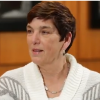What design issues can impact the creation and delivery of a writing MOOC?
Creating and Delivering a Writing MOOC
Chris Friend’s (2013) "Will MOOCs Work for Writing?" examined the tensions that exist between face-to-face and MOOC-centered delivery methods for writing instruction. Likening the “complex, variable, and fluid task” of writing to "herding cats" (para. 1), Friend offered an alternative point of view. In his words, MOOCs "will enhance, not replace, classroom learning. We cannot teach all students every intricacy of writing—for their future courses, their careers, and their civic engagement—using a MOOC format, but we can use MOOC strategies to improve our existing in-class teaching efforts" (para. 5). Exploring the level to which design and creation of MOOC materials have influenced the experiences of these panelists adds depth to the discussion of how writing courses may function in this format.
In that respect, our engagement with the MOOC wasn't really all that different from some other things that we have done. In other respects, it was a completely different experience. . . . Our writing MOOC was not nearly as large . . . wasn't even close to as large as some of the Coursera-sponsored MOOCs that some of our colleagues ran: they had a bullhorn and we had a kazoo. We didn't have the scale, but we still had a course with a couple thousand students in it for a little while. For a little while, we panicked in terms of what that experience felt like for us as teachers and what our different teacher roles were. There were some things about engaging with learners at scale. The online stuff wasn't that big of a deal. We've done that before, but the scale part created some interesting new kinds of experiences for us as teachers.
[For] the actual design of the course . . . I looked through a lot of Coursera courses. They gave me access to their courses, so I could look at them to find the design that we could use and also to get an idea how the class would work. I only found a couple that I really liked. Most of the courses were video/lecture based, and really that's how it started, right? Let's put the lectures from the best professors online, and put those out there to the world. That's how this idea at Coursera, anyway, got started. And so the courses were all video/lecture. You went to the video lectures, you look at the lecture, then you take a test or did a discussion or something else and then that was it. That's not how we teach online in California in the community colleges. There has to be contact with the instructor, that's by law for Distance Ed . . . . Interaction with the instructor is a federal requirement, and I didn't see that in those courses, not much, and I completely understand when you have 50,000 people in the class. How are you going to interact with them?
For example, the MOOC that my students and I took which was Education and Digital Culture . . . was done by the University of Edinburgh. They had a multimedia project at the end where they were basically asking students to make collages and things like that. It was all fine and good, but they didn't really give a lot of infrastructure with that.
There really is no way to teach that, so if you want students to make projects that involve video and audio and images, you have to spend some time in the course explaining how to work that kind of equipment. MOOCs don’t really lend themselves to that because it's a platform that can reach very, very widely, but it's very, very shallow. It's not really possible in the ones that I've been in to go too deep into things like, "This is how Audacity works" or something like that.


 Bill Hart-Davidson: An assumption on the user side of MOOCs is that you are learning on your own time. You might submit to some schedules, but the more flexibility you can afford the learner to fit it into their schedule because it is not a formal class the better you will see them engage. And, yet how do you balance that with the need to have a synchronous exchange? Or at least a quasi-synchronous exchange especially for peer scaffolding? Everybody has to be on the stage at the same time. Now that is different from the other MOOCs where I felt like we were on a schedule for the convenience of the instructor.
Bill Hart-Davidson: An assumption on the user side of MOOCs is that you are learning on your own time. You might submit to some schedules, but the more flexibility you can afford the learner to fit it into their schedule because it is not a formal class the better you will see them engage. And, yet how do you balance that with the need to have a synchronous exchange? Or at least a quasi-synchronous exchange especially for peer scaffolding? Everybody has to be on the stage at the same time. Now that is different from the other MOOCs where I felt like we were on a schedule for the convenience of the instructor. Jeffrey Grabill: There are certain teaching and designing roles that a number of compositionists and writing people play which are quite similar. If you're running a writing program of any kind, or running a program of any kind, you have a similar sort of producer role even if you don't understand yourself in that way. That is, there [are] multiple courses, there [are] multiple teachers, [and] there should be—I would think—some coherence across the experience of your program for students. There [are] certain kinds of intellectual and practical conversations that have to take place in order for programs to run effectively.
Jeffrey Grabill: There are certain teaching and designing roles that a number of compositionists and writing people play which are quite similar. If you're running a writing program of any kind, or running a program of any kind, you have a similar sort of producer role even if you don't understand yourself in that way. That is, there [are] multiple courses, there [are] multiple teachers, [and] there should be—I would think—some coherence across the experience of your program for students. There [are] certain kinds of intellectual and practical conversations that have to take place in order for programs to run effectively. Pat James: The other thing was that there was no restriction on this. There was no curriculum committee influence on this. This was not a course that was going to be offered for credit; we knew it was more of a resource for people, so we didn't have to go through the curriculum process. And not having to go through the curriculum process was probably one of the more important things that happened in this design. Our faculty . . . had a real goal, a real specific goal, and they were just looking at "What do students need?" Not "Fill in a three-unit or four-unit box." When you have to fill a box, a unit structure, you're thinking, "Okay, I gotta have enough stuff to make it this many hours to have this much work. I'm going to make sure that my objectives fit the four-units box." It wasn't about that. It was "What do they need? How long does it take? What's the best way to get them to actually learn what we want them to learn?" That was very freeing for the instructors. They felt like they had a lot of freedom in being able to design the class they way they wanted, and they just jumped into it with a lot of enthusiasm as a result. That was a big piece.
Pat James: The other thing was that there was no restriction on this. There was no curriculum committee influence on this. This was not a course that was going to be offered for credit; we knew it was more of a resource for people, so we didn't have to go through the curriculum process. And not having to go through the curriculum process was probably one of the more important things that happened in this design. Our faculty . . . had a real goal, a real specific goal, and they were just looking at "What do students need?" Not "Fill in a three-unit or four-unit box." When you have to fill a box, a unit structure, you're thinking, "Okay, I gotta have enough stuff to make it this many hours to have this much work. I'm going to make sure that my objectives fit the four-units box." It wasn't about that. It was "What do they need? How long does it take? What's the best way to get them to actually learn what we want them to learn?" That was very freeing for the instructors. They felt like they had a lot of freedom in being able to design the class they way they wanted, and they just jumped into it with a lot of enthusiasm as a result. That was a big piece. Kay Halasek: I think one of the revelations for me did have to do with how the MOOC in some ways differed from other kinds of online writing contexts. I mean, simply by the sheer scale, right? We found ourselves having to re-think some design principles. One simple one might be our peer-review platform. While we might have a peer-review platform as we do now in our hybrid courses on the OSU campus, we could recognize the value of having an instructor dashboard that would give us all the information on the each of the individual students, their progress, and whether peer reviews had been submitted and so forth. When you scaled that up to 37,000 people, an instructor dashboard just doesn’t facilitate. It really only complicates which meant then that our design principles also had to speak to scale. If we don’t have an instructor dashboard and we can’t engage students individually in the same way we would in other online environments, how do we substitute other mechanisms for engaging the learners that we had in the MOOC?
Kay Halasek: I think one of the revelations for me did have to do with how the MOOC in some ways differed from other kinds of online writing contexts. I mean, simply by the sheer scale, right? We found ourselves having to re-think some design principles. One simple one might be our peer-review platform. While we might have a peer-review platform as we do now in our hybrid courses on the OSU campus, we could recognize the value of having an instructor dashboard that would give us all the information on the each of the individual students, their progress, and whether peer reviews had been submitted and so forth. When you scaled that up to 37,000 people, an instructor dashboard just doesn’t facilitate. It really only complicates which meant then that our design principles also had to speak to scale. If we don’t have an instructor dashboard and we can’t engage students individually in the same way we would in other online environments, how do we substitute other mechanisms for engaging the learners that we had in the MOOC? Steve Krause: In terms of specifically [using MOOCS to teach multimodal composition] . . . , it seems to me that a lot of it depends on what you mean by multimodal composition of course. It seems to me that a lot of those kinds of projects involve some kind of technological hurdle that is a little bit harder to climb than just say words-in-a-row kind of essays.
Steve Krause: In terms of specifically [using MOOCS to teach multimodal composition] . . . , it seems to me that a lot of it depends on what you mean by multimodal composition of course. It seems to me that a lot of those kinds of projects involve some kind of technological hurdle that is a little bit harder to climb than just say words-in-a-row kind of essays.
Interviewer: Some of the content [in the first iteration of the Duke MOOC] had been recorded. You used that material again rather than create new recordings in the studios?
Denise Comer Yes. I considered revamping some of the videos, and I considered making a lot of changes with the course, but frankly there were a couple barriers to me doing so. One was logistical. If I changed any piece of the course or if I drastically shortened [it] . . . I wanted to move the course down from being twelve weeks to six weeks or eight weeks, which is more in line with what most MOOCs are, changing any one piece of it unravels the entire course.
I didn't have the time nor the energy to redo an entire course again. I found myself unable to even tweak a lot of things that I would have otherwise because it was so all interconnected. That is different than the face-to-face classes that I teach. In my semester courses, I make notes on my syllabus, and I make notes to myself so that if I teach the course again, I can make changes. It is not as time intensive, and you have a whole sixteen weeks to develop the course. It seemed easier to do, but with the MOOC, I couldn't do that.